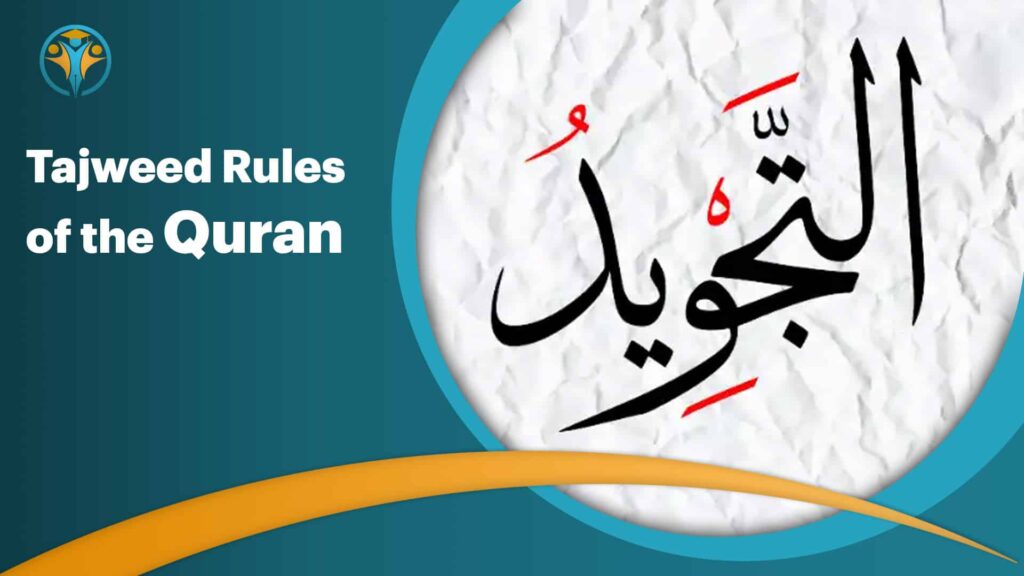The Holy Quran is the divine word of Allah, revealed in the Arabic language to the Prophet Muhammad ﷺ. Every letter, sound, and pause in the Quran carries meaning and spiritual depth. That’s why reciting it correctly is an act of devotion in itself. The science that governs correct Quranic pronunciation is called Tajweed — a discipline that ensures every reader pronounces each letter as it was revealed.
Understanding Tajweed is not only essential for accurate recitation but also for preserving the beauty and rhythm of Allah’s words. For Muslims seeking to improve their recitation, learning Tajweed with the help of Color Coded Qurans can make this journey both easier and more engaging.
What Is Tajweed?
Tajweed comes from the Arabic word “jayyid,” meaning “to make better” or “to improve.” In Quranic context, Tajweed refers to the set of rules that govern the correct pronunciation, articulation, and rhythm of Quranic recitation.
It involves understanding how each Arabic letter is produced (known as makhraj) and how certain sounds are modified by the letters that come before or after them. Tajweed also guides readers on when to pause, stretch, or merge sounds for smooth, accurate reading.
Learning Tajweed is not about speed — it is about precision, respect, and the preservation of the original sound of revelation.
Why Tajweed Is Important
Reciting the Quran beautifully and accurately is not merely an art; it’s an obligation. The Prophet Muhammad ﷺ said:
“Beautify the Quran with your voices.” — Sahih Bukhari
This hadith highlights the importance of reciting the Quran with care and attention. When Tajweed is applied properly, the reciter honors the sacred text by maintaining its clarity and rhythm.
Here are a few reasons why Tajweed is crucial for every Muslim:
- Preserves the Meaning: A small change in pronunciation can completely alter a word’s meaning. Tajweed ensures accuracy in conveying Allah’s message.
- Fulfills an Obligation: Learning Tajweed fulfills the Quranic command to “recite the Quran with measured recitation” (Surah Al-Muzzammil 73:4).
- Enhances Spiritual Experience: Correct recitation brings peace to the heart and strengthens one’s connection with Allah.
- Promotes Global Consistency: Tajweed helps maintain a unified recitation style among Muslims around the world, preserving the authenticity of the Quran.
Basic Rules of Tajweed Every Reader Should Know
Tajweed includes many detailed rules, but understanding a few foundational principles can help beginners get started:
1. Makharij al-Huruf (Points of Articulation)
Every Arabic letter originates from a specific part of the mouth, throat, or tongue. Knowing these points ensures accurate pronunciation.
2. Sifaat al-Huruf (Characteristics of Letters)
Each letter has distinct characteristics, such as heaviness (tafkheem) or softness (tarqeeq). Understanding these helps maintain the unique sound of each letter.
3. Rules of Noon and Meem
The letters “Noon” (ن) and “Meem” (م) follow special nasalization and merging rules (Ikhfa, Idgham, Iqlab), which give recitation its smooth flow.
4. Madd (Elongation)
Certain vowels must be elongated for one, two, or more counts. This elongation helps maintain the Quran’s rhythm and ensures correct meaning.
5. Qalqalah (Echoing Sound)
Letters like ق, ط, ب, ج, and د create a slight echo when pronounced at the end of a verse or word, giving the recitation a balanced tone.
Learning these rules requires both study and listening practice. For beginners, using a Color Coded Quran with Tajweed simplifies the process by visually guiding where to apply each rule.
How Color Coded Qurans Help in Learning Tajweed
Color Coded Qurans have become one of the most effective tools for Tajweed learners. In these editions, each Tajweed rule is represented by a specific color, allowing readers to visually identify how and when to apply pronunciation rules.
For example:
- Green might indicate elongation (Madd)
- Red could mark nasalization (Ikhfa)
- Blue might represent merging sounds (Idgham)
By using color cues, even beginners can quickly recognize pronunciation changes and apply Tajweed rules correctly. Over time, these visual reminders become natural reading habits.
At Qudratullah Company, our Color Coded Quran with Tajweed editions are designed with clarity, precision, and premium-quality printing. The color scheme is consistent throughout, making it easier for children, students, and adults to master recitation gradually.
Benefits of Using Color Coded Qurans
- Visual Learning Support: Helps identify Tajweed rules instantly without memorizing all markings.
- Ideal for Beginners: Great for students and those who are new to Quran reading or Arabic.
- Improves Pronunciation Quickly: Regular practice with color cues reinforces correct articulation.
- Encourages Consistency: Easier reading experience encourages daily recitation.
- Suitable for All Ages: Perfect for kids, adults, and elderly readers who prefer clear, guided text.
By combining color-coded assistance with consistent reading, learners can progress from recognizing rules to reciting fluently with confidence.
How to Practice Tajweed Effectively
Learning Tajweed takes patience, practice, and guidance. Here are some steps to build a strong foundation:
- Start with a Qualified Teacher: A teacher can correct your pronunciation and guide you through the finer details of recitation.
- Use Audio and Apps: Listening to expert reciters helps tune your ear to correct sound patterns.
- Practice Daily: Even 10–15 minutes of daily recitation can create lasting improvement.
- Focus on Short Surahs: Begin with smaller chapters until pronunciation feels natural.
- Read from Color Coded Qurans: Reinforce learning visually through guided recitation.
By applying these steps consistently, you’ll notice improvement not only in pronunciation but also in your spiritual focus during recitation.
Why Proper Pronunciation Reflects Respect for the Quran
Every word of the Quran is sacred, and pronouncing it correctly reflects respect for Allah’s revelation. When a reader invests time in mastering Tajweed, it demonstrates sincerity, devotion, and humility toward divine knowledge.
Moreover, proper pronunciation ensures that the reciter does not unintentionally alter meanings or recite incorrectly. The goal is not to perform but to preserve the authenticity of the message as it was revealed.
For those committed to improving their recitation, Qudratullah’s Color Coded Qurans are the perfect resource — offering high-quality design, Tajweed guidance, and a clear layout that encourages lifelong learning.
Conclusion
Tajweed is the key to unlocking the beauty and precision of Quranic recitation. It preserves the divine message as revealed to the Prophet ﷺ and helps readers experience the spiritual depth of each verse.
Whether you’re a beginner or an experienced reader, learning Tajweed strengthens both your recitation and your connection with Allah. Using tools like the Color Coded Quran with Tajweed makes this journey easier, more engaging, and more rewarding.
Invest in your spiritual growth today by choosing a Quran that guides your learning. With consistent practice and the right resources, you can recite the Quran with confidence, accuracy, and heartfelt devotion.


